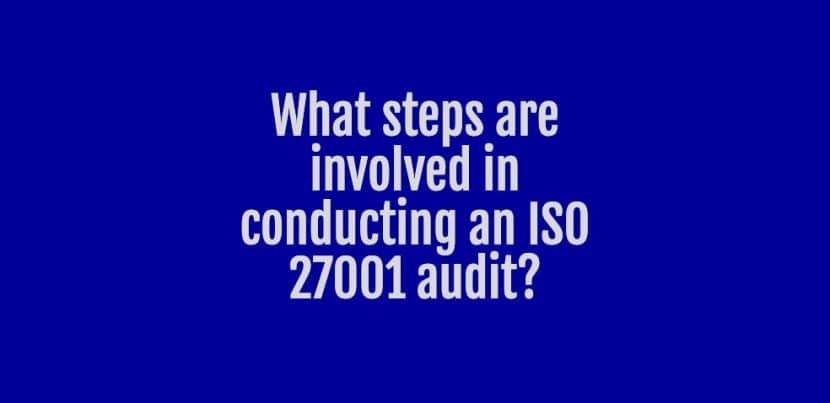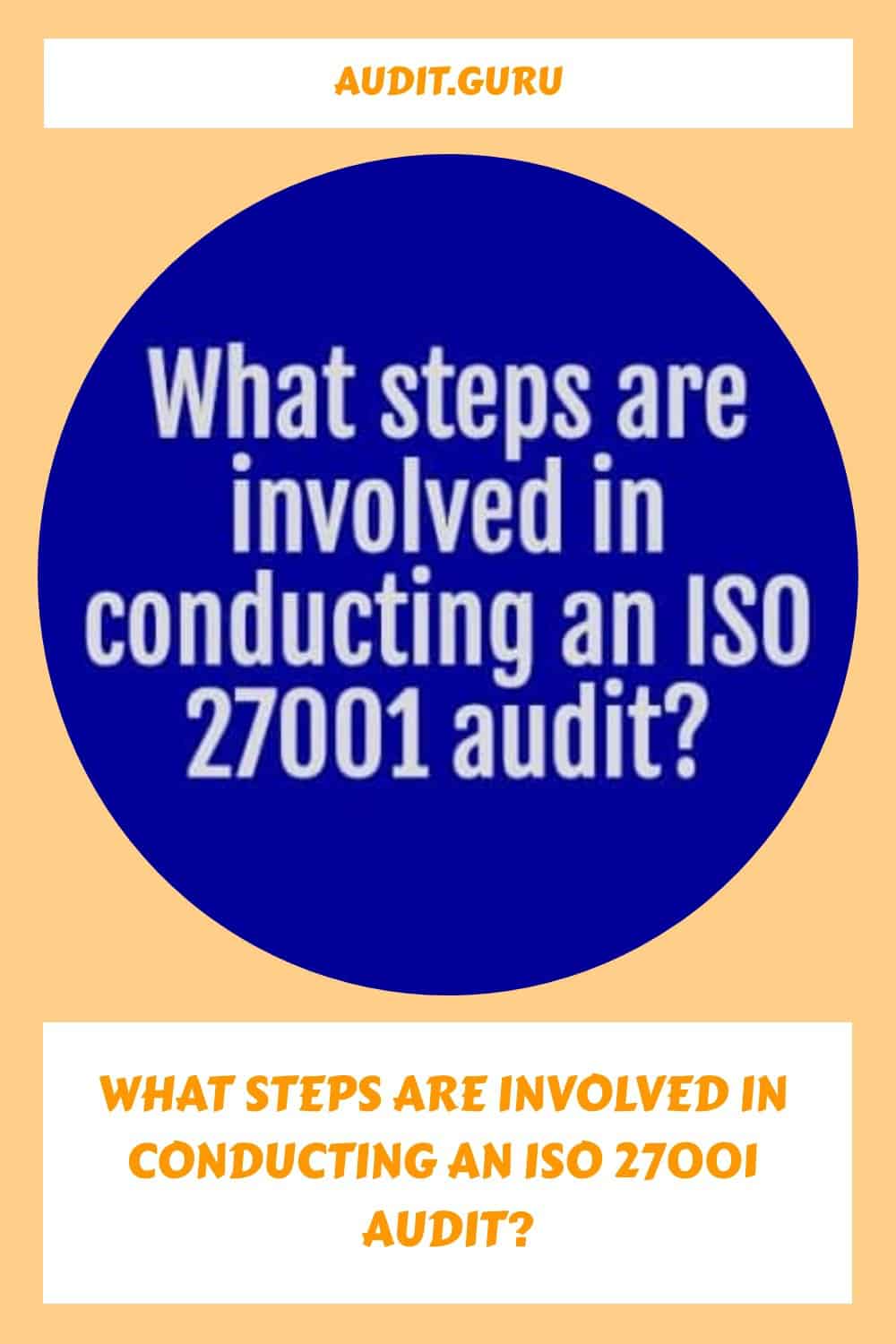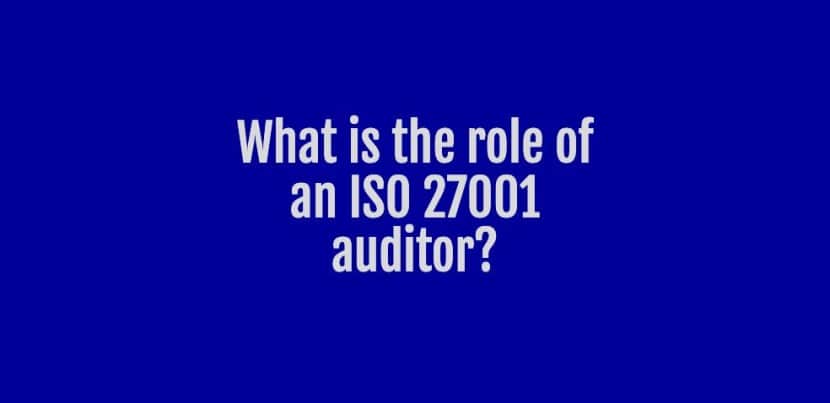Conducting an ISO 27001 audit involves several necessary steps to ensure compliance with the international standard for information security management systems (ISMS). Here are the key steps involved in conducting an ISO 27001 audit:
1. Define the Scope: Determine the boundaries and extent of the audit, including the specific processes, departments, systems, or locations to be assessed.
2. Plan the Audit: Develop an audit plan that outlines objectives, criteria, resources required, and the timeline for conducting the audit. This plan should include the identification of information assets and relevant risks.
3. Conduct a Gap Analysis: Evaluate the current state of information security controls against the requirements of ISO 27001. This analysis identifies any gaps between the existing controls and the necessary measures to comply with the standard.
4. Document Review: Review relevant documentation such as policies, procedures, and records to assess their compliance with ISO 27001’s requirements. This includes examining the ISMS framework, risk assessments, control objectives, and treatment plans.
5. On-site Assessment: Conduct interviews and site visits to evaluate the implementation and effectiveness of information security controls. This involves engaging with key personnel to validate compliance and identify any non-conformities.
6. Assess Control Effectiveness: Determine whether the implemented controls are effectively mitigating the identified risks and protecting information assets. This assessment involves verifying the implementation, operation, and maintenance of control measures and security practices.
7. Report Findings: Compile an audit report that outlines the findings, including identified non-conformities, observations, and recommendations for improvement. The report may also include an assessment of the overall compliance with ISO 27001 and the effectiveness of the ISMS.
8. Follow-up and Verification: Monitor the corrective actions taken by the organization to address non-conformities identified during the audit. Conduct a follow-up assessment to verify if the actions have been implemented effectively.
9. Certification Decision: After completing all necessary corrective actions, the certifying body or external auditor can review all audit documentation and make a decision regarding ISO 27001 certification.
It is worth mentioning that conducting an ISO 27001 audit typically requires expertise and knowledge of the standard’s requirements. Therefore, organizations often seek assistance from experienced auditors or consultants who possess the necessary skills to perform a thorough audit.
How do auditors assess compliance with ISO 27001 standards?
Auditors assess compliance with ISO 27001 standards through a systematic and structured approach. Here are the steps they typically follow:
1. Reviewing documentation: Auditors begin by examining the organization’s information security management system (ISMS) documentation, which includes policies, procedures, guidelines, and other relevant documents. They verify that all necessary documents are in place and aligned with ISO 27001 requirements.
2. Gap analysis: Auditors perform a thorough gap analysis by comparing the organization’s current practices with the ISO 27001 standard’s requirements. They identify any gaps or areas where the organization is not fully compliant.
3. Interviews and discussions: Auditors conduct interviews and discussions with key individuals within the organization to gain a better understanding of how information security is implemented and managed. They may talk to senior management, IT personnel, data owners, and other relevant stakeholders.
4. On-site inspections: Auditors visit the organization’s premises to assess its physical security measures. They inspect facilities, equipment, and access controls to ensure they meet the requirements defined by ISO 27001.
5. Testing controls: Auditors evaluate the effectiveness of information security controls by conducting tests, including vulnerability assessments and penetration testing. These tests help identify weaknesses or vulnerabilities and assess whether controls are operating as intended.
6. Assessing risk management: Auditors evaluate the organization’s risk management processes and how they align with ISO 27001 requirements. They review risk assessments, risk treatment plans, and risk monitoring practices to ensure they are adequate and implemented effectively.
7. Compliance verification: Throughout the audit process, auditors assess compliance by referring to specific clauses and controls within ISO 27001. They check if the organization’s implemented controls meet the necessary criteria and if documented evidence supports their effectiveness.
8. Reporting findings: Once the audit is complete, auditors prepare a detailed report summarizing their findings. The report will typically include observations of non-compliance, areas for improvement, and recommendations for further enhancing the organization’s information security practices.
It’s important to note that auditors must be trained and accredited by an official certification body to perform ISO 27001 audits effectively. This ensures that they have the necessary expertise to evaluate compliance accurately and provide valuable insights for organizations seeking certification.
What are some common challenges faced by ISO 27001 auditors?
Some common challenges faced by ISO 27001 auditors include:
1. Lack of awareness and understanding: Many organizations are not fully aware of the requirements of ISO 27001 or do not fully understand how to implement the standard. This can lead to resistance or incomplete compliance during the audit process.
2. Limited resources: Some organizations may not allocate sufficient resources, such as time, personnel, or budget, to achieve and maintain ISO 27001 certification. This can result in incomplete implementation or lack of evidence during the audit.
3. Resistance to change: Implementing ISO 27001 often requires changes to existing processes and procedures. Some employees or departments may resist these changes, making it challenging for auditors to ensure full compliance.
4. Complexity of IT infrastructure: Organizations with complex IT infrastructures, such as multiple systems, networks, and applications, can present challenges for auditors. Assessing the effectiveness of controls can be difficult in such environments.
5. Inadequate documentation: Auditors rely heavily on documented evidence to evaluate compliance. When organizations fail to maintain proper documentation, auditors may struggle to assess compliance and effectiveness of implemented controls.
6. Non-compliance with legal and regulatory requirements: Organizations must ensure compliance with relevant laws and regulations related to information security. Auditors may face challenges if there is non-compliance or lack of understanding of these requirements.
7. Resistance from top management: Obtaining support from top management is crucial for successful implementation and maintenance of ISO 27001. However, if top management is not fully committed or fails to provide necessary resources, auditors may face challenges in achieving compliance.
8. Lack of continuous improvement: ISO 27001 emphasizes the importance of continuous improvement in information security management. Auditors may find it challenging if organizations fail to demonstrate a systematic approach to identifying and addressing areas for improvement.
9. Inadequate training and awareness programs: Organizations need to provide relevant training and awareness programs to educate employees about information security and their roles and responsibilities. If such programs are lacking, auditors may face challenges in ensuring that individuals understand and comply with information security requirements.
It is important to note that these challenges can vary depending on the specific organization and its unique circumstances. Skilled auditors employ effective communication and problem-solving techniques to navigate these challenges and ensure a thorough and effective assessment of an organization’s ISO 27001 compliance.
How can organizations benefit from regular ISO 27001 audits?
Regular ISO 27001 audits can bring several benefits to organizations. Here are some ways in which organizations can benefit from these audits:
1. Enhanced cybersecurity: ISO 27001 is a globally recognized standard for information security management systems. Regular audits help organizations identify vulnerabilities and gaps in their information security practices, allowing them to take necessary actions to strengthen their cybersecurity measures.
2. Risk reduction: ISO 27001 audits provide a systematic framework to identify and assess risks related to information security. By conducting regular audits, organizations can proactively identify potential risks, prioritize them, and implement appropriate controls to mitigate those risks.
3. Compliance and regulatory requirements: Many industries have specific legal and regulatory requirements related to information security. ISO 27001 provides a robust framework to comply with such regulations. Regular audits help organizations ensure that they are meeting those requirements, which can prevent legal consequences and reputational damage.
4. Improved credibility and trust: Achieving ISO 27001 certification is a testament to an organization’s commitment to information security. Regular audits reinforce this commitment and demonstrate a continuous improvement approach, strengthening the credibility and trust of clients, partners, and stakeholders.
5. Process improvement: ISO 27001 audits evaluate an organization’s information security management system against best practices. This helps identify areas where processes can be improved and streamlined. Regular audits promote a culture of continuous improvement, enabling organizations to fine-tune their practices for better efficiency and effectiveness.
6. Competitive advantage: ISO 27001 certification is often required by clients and partners when selecting vendors or service providers. Regular audits ensure that organizations maintain the necessary standards, giving them a competitive edge over others who may not have the certification.
7. Incident response readiness: Information security incidents can have severe consequences. Regular ISO 27001 audits enable organizations to assess their incident response capabilities, identify any gaps, and implement improvements. This helps ensure a prompt and effective response to incidents, minimizing potential damage.
Overall, regular ISO 27001 audits help organizations develop a robust information security management system, align with industry best practices, and build a culture of continuous improvement. These benefits contribute to better risk management, enhanced credibility, and a competitive advantage in the market.









